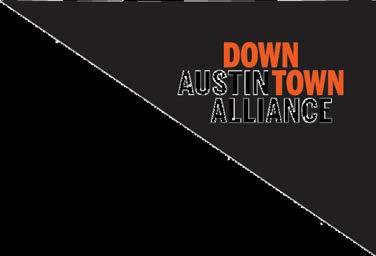DOWNTOWN AUSTIN RETAIL
& SMALL BUSINESS SURVEY RESULTS

Contents:
Key Findings
Survey Methodology
Respondent Profile
Survey Results
Downtown Austin Alliance | April 2020


Key Findings
Survey Methodology
Respondent Profile
Survey Results
Downtown Austin Alliance | April 2020
Administered electronically through the Downtown Alliance website

Approximately 600 businesses were emailed directly
Took about 8 mins to complete
Made accessible for 10 days: Thursday, April 9, 2020 to Sunday, April 19, 2020
Targeted downtown storefront businesses
Distributed broadly using a number of communication channels
Note: Survey results and analysis depicted within this report are fairly representative of downtown small businesses, overall. However, please note the following: The report compares the distribution of self-reported business types in this survey with a third-party data provider’s profile of downtown storefront businesses by type. Local, regional, and national business chains did not participate in the survey. This will impact representation of certain businesses like well known convenience stores, cafes and gyms. The survey received responses from every district in downtown with the exception of Rainey Street District.


Downtown’s small and retail businesses have been hit extremely hard by COVID-19 safety restrictions. In particular, downtown restaurants and bars are deeply impacted.
Many small and retail downtown businesses are dependent on tourism, events, and daily foot traffic. Restrictions on large gatherings, loss of SXSW and festival season, and discouraged travel yield economic impacts that are deep and far-reaching.
Most businesses have applied for financial assistance but are more concerned with regaining their customer base they’ve built over the years.
Loss of current and future revenue presents challenges for many who wish to go back to their pre-COVID state. Unfortunately, many of those businesses are not certain they will be able to return.
We are suspending operations temporarily.
We are permanently closed.
We are doing online store orders and operations only.
We are doing take-out and delivery only.
We are fully operational.
We are open, working remotely.

of businesses have suspended operations or closed completely. are open but have adapted operations.
ys downtown businesses are adapting their operations in response to the public health orders:
Restaurant and Bar respondents offering take-out and delivery
We are open, but reduced our services. We are open, but have less foot tra
Retail business respondents providing online goods and/or services.
customers
Business respondents instituting new safety procedures.
To what degree has your business revenue been impacted since public health orders went into effect?

Businesses of all types are experiencing significant financial loss.
A cleaning company reported an increase in revenue.
Downtown tourism-dependent businesses such as performance venues, bars, banquet halls, and restaurants are experiencing the deepest revenue losses.
A substantial number of downtown storefront employees have been furloughed or laid off.

Permanently or temporarily let go of approx. 76 - 100% of employees. Permanently or temporarily let go of approx. 1 - 25% of employees. Permanently or temporarily let go of approx. 51 - 75% of employees. Permanently or temporarily let go of approx. 26 - 50% of employees.

How quickly, once the public health orders have been lifted, do you anticipate reopening?

77% of businesses indicated it would take a month or less to reopen.
Business and Nonprofit educational business types were among the small group that could take longer than a month to reopen. A mixed representation of business types were unsure about reopening.
nce the public orders are lifted, what do you anticipate will be
greatest challenge in reopening?
General Consumer
Confidence
"Convincing the public to go to concerts around other people"
"Getting customers to get back in the shopping mode"
"GETTING THE CUSTOMER TO COME BACK"
"Getting people comfortable enough to go back out and enjoy things."
"Public confidence in going back out"
Public Health
Concerns
"Assuring members (customers) that our facilities are clean and being in closer contact is safe"
"Getting customers to show up and feel safe"

Revenue
Concerns
"Restoring business to previous revenue"
"Catching up financially, rehiring staff"
"Cash flow to sustain regular operations"
"It will take time for people to start to gather in groups again"
"Re-configuring our stores to open
up greater social distancing space"
"Adjusting to decreased volume"
"Decreased revenue, paying back-rent, paying back-taxes"

80% of businesses say that they can survive 3 months or less in this current state. A proportion of businesses continue to adapt their business practices.

Restaurants, bars, performance venues, and event businesses are at greater risk of closing, reporting 3 months or less on average.
Retail goods, business/professional services, non-profit
business types are at less risk of closing in the short-term, reporting 4 months or more on average.

